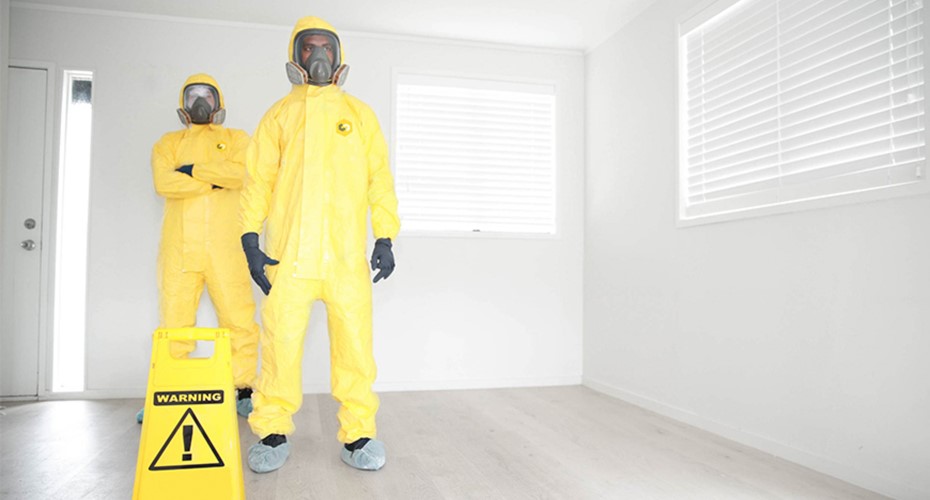The renovation nightmare you can’t see

Asbestos is not a nice character, but is presently lurking invisibly in many New Zealand homes. Although it was historically used in many building materials, it is now deemed as a no-go-zone. There are many health risks associated with the inhalation of asbestos fibres which is why it’s the leading killer in the New Zealand workforce. Sadly there is no cure for any kind of asbestos related health issue.
What the new asbestos regulation means for renovation?
As of April 2018, any property undergoing major renovation will need to be checked for asbestos. You can contact Chemcare for a licensed asbestos assessor and certified inspector to check your property. The main reason it needs to be inspected is because asbestos poses a health and safety risk when it is broken up or interfered with. The asbestos fibres then become airborne - and this is where the real damage begins.
As soon as you start renovation planning, you may well become a PCBU (Person Conducting Business or Undertaking). As a PCBU, it is your obligation that the exposure to asbestos is controlled. The current asbestos approved code of practice quotes “If a PCBU carrying out demolition, refurbishment or removal, or intending to carry out this work in a home identifies asbestos, the PCBU must tell the homeowner, landlord (if applicable) and occupant about the asbestos so they can keep themselves and others safe.”
How to recognise it?
Unfortunately, because asbestos has no distinct smell or visible quality - it’s near impossible to detect by the naked eye. In saying this, if your house was constructed before 1990, it is highly likely you have some asbestos in your property. If constructed before the year 2000 there is still a chance of asbestos, and we would recommend it is inspected. If you know you have asbestos, then eliminating the risk before renovating is best practice. Chemcare can assist in helping to decide if the asbestos needs to be removed due to damage or deterioration. If you are unsure, you NEED to have an asbestos inspection - as you could face health and legal risks further down the line.
If asbestos is found - can I remove it myself?
Although Kiwis are known for our DIY culture, asbestos removal isn’t included in this. In fact removing or even disturbing the asbestos without the proper technical knowledge and the correct safety equipment could spell disaster. Unless you are competent in asbestos removal - three words, don’t do it. Did you know the use of high pressure water blasting is prohibited on asbestos? It really makes sense to know the property you live in before carrying out even basic cleaning. If there are any broken or damaged areas on the property, ask yourself: What is the material, and could it be asbestos? After this, we would recommend that you call Chemcare for advice.
What are the costs to remove it?
The price of asbestos removal is often quite high, but we don’t believe a price should be put on the safety of yourself and your family. Prices can start as low as $400.00 for basic removal of fence panels or cladding external materials and $1200.00 for internal areas, such as textured ceilings or vinyl’s. A rough guide of $65.00 sqm for Class B materials and $150.00 sqm for Class A materials. This is a small price to pay to protect yourself, your family and workers, whilst also protecting and investing into the future of your property.
It’s also important to consider that there is an obligation to have an independent asbestos assessor involved in any project over 10 sqm, and an allowance and budget of 20% of the removal costs.
When it comes to your home or investment property – it’s always better to be proactive rather than reactive. Get your house checked for asbestos before you plan on renovating – trust us it will save you from plenty of issues later on. Be safe, be sure with Chemcare.
This blog was written by Emily Fly of Chemcare and used with permission.
Receive updates on the housing market, interest rates and the economy. No spam, we promise.
The opinions expressed in this article should not be taken as financial advice, or a recommendation of any financial product. Squirrel shall not be liable or responsible for any information, omissions, or errors present. Any commentary provided are the personal views of the author and are not necessarily representative of the views and opinions of Squirrel. We recommend seeking professional investment and/or mortgage advice before taking any action.
To view our disclosure statements and other legal information, please visit our Legal Agreements page here.

